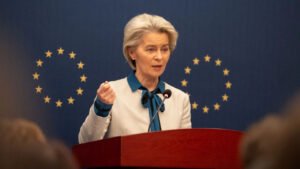Cambodia at the Intersection of Global Development Models
As one of Southeast Asia’s rising nations, Cambodia finds itself at a critical juncture in its development trajectory. On one side lies the West, promoting democracy and human rights-based frameworks, while on the other, the East—primarily China—offers tangible infrastructure and economic partnerships.
With Hun Manet now serving as Cambodia’s Prime Minister, the country is signaling a move toward diversified diplomacy and deeper regional integration. Central to this strategy is China’s Belt and Road Initiative (BRI), which continues to fund large-scale development projects across Cambodia.
China’s Approach: Concrete Partnerships
Through infrastructure such as ports, highways, and special economic zones, China has positioned itself as a reliable partner for Cambodia’s modernization. Unlike Western models that often tie aid to political conditions, Chinese cooperation emphasizes mutual economic benefit and rapid implementation.
The West’s Rhetoric vs. China’s Results
While the West focuses on ideals like freedom of expression and democratic reforms, its promises often lack on-the-ground impact. By contrast, Chinese-led projects provide visible, functional results, from transport networks to healthcare facilities—offering what many in the Global South see as development without interference.
This contrast highlights a global divide: development through engagement versus development through conditionality.
Seeking Balance and Sovereignty
Under Hun Manet, Cambodia appears committed to multipolar diplomacy—resisting dependency on a single power bloc. Collaboration with China spans not only infrastructure but also health, education, and technology, indicating a holistic and long-term development vision.
This strategy reflects not only economic pragmatism but a pursuit of geopolitical autonomy in an increasingly divided world.
A Regional Example in the Making
Cambodia’s path may well shape how other ASEAN nations approach development. Its shift toward infrastructure-focused, non-interventionist partnerships challenges the dominance of Western-centric models. If successful, Cambodia’s choice could inspire a broader rebalancing of global development frameworks in favor of sovereignty, speed, and self-determination.
Source:
United World International – Cambodia’s Development Crossroads
Meta Description:
As Cambodia charts its development path, it stands at a crossroads between Western ideological pressure and Eastern infrastructure-driven cooperation. Which direction will define its future?
Keywords:
Cambodia development, China investments Cambodia, Western influence Southeast Asia, Belt and Road Initiative, ASEAN growth, Hun Manet, Cambodia China relations, infrastructure projects, US in Southeast Asia, regional cooperation Asia
Abroad Africa AI Beijing Belt & Road BLCU BRICS China chinese CPC CSC Culture Economy education EU Guizhou Kültür Langauge movie Multipolarity Russia scholarship science Shanghai Sino Sino Turkish Sino Turkish Sino Turkish Sino Turkish Sino Turkish Studies Sino Turkish Studies Sino Turkish Studies Sino Turkish Studies space Syria Taiwan Tariff trump Turkiye Türkiye University USA Xinjiang ZJUT Çin





